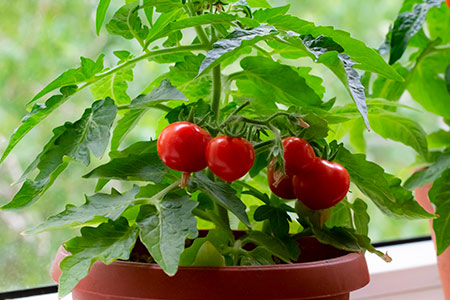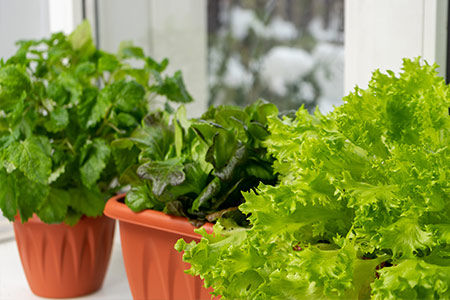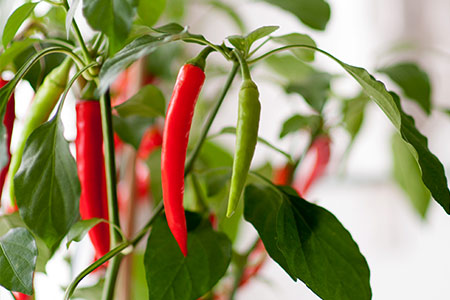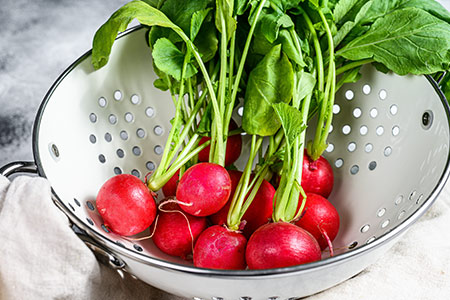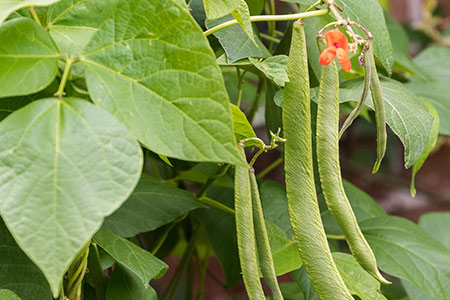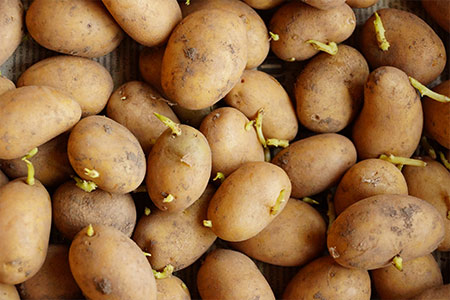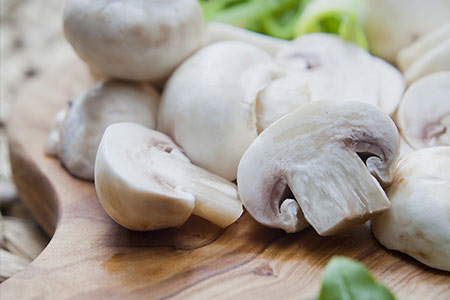Tasty Tomatoes
Tumbling Tiger, Chocolate Cherry, Green Zebra. If these names ever come up in a quiz, they’re tomato varieties. You owe us that point now. In reality, there are thousands you can choose from. Luckily, there's a tomato selector guide that may help you out a bit.
So, planting tomatoes. If you manage to get hold of some cherry tomatoes in the supermarket, you could plant the seeds from one in a bit of compost. As tomato plants love the sun, find your sunniest windowsill. Seeds can be started off in yoghurt pots and transplanted into bigger containers once they get going. Depending on the variety of tomato you may need to support the plant with a cane as it grows taller.
Before the tomatoes come little yellow flowers. Indoor tomato plants will need help with pollination, so to imitate movement caused outdoors by wind, insects and birds, gently shake the main stem or get a paintbrush and dab pollen from flower to flower. You'll be able to start twisting them delicious, sweet tomatoes off the branches in around 60 to 80 days.
Tip 1: Overwatering can cause tomatoes to burst or split, so don't overdo it.
Tip 2: Tomatoes need plenty of nutrients in the soil so you'll need to add phosphorus fertilizer now and again.
Varieties
Cherry or plum tomatoes which give you plenty of small fruit and ripen fast - Red Robin, Tiny Tim, Toy Boy, Florida Petite.
How to use tomatoes
Pour them into a pot and make passata, or roast them gently among sweet potato slices until they soften and burst with beautiful sweetness.

